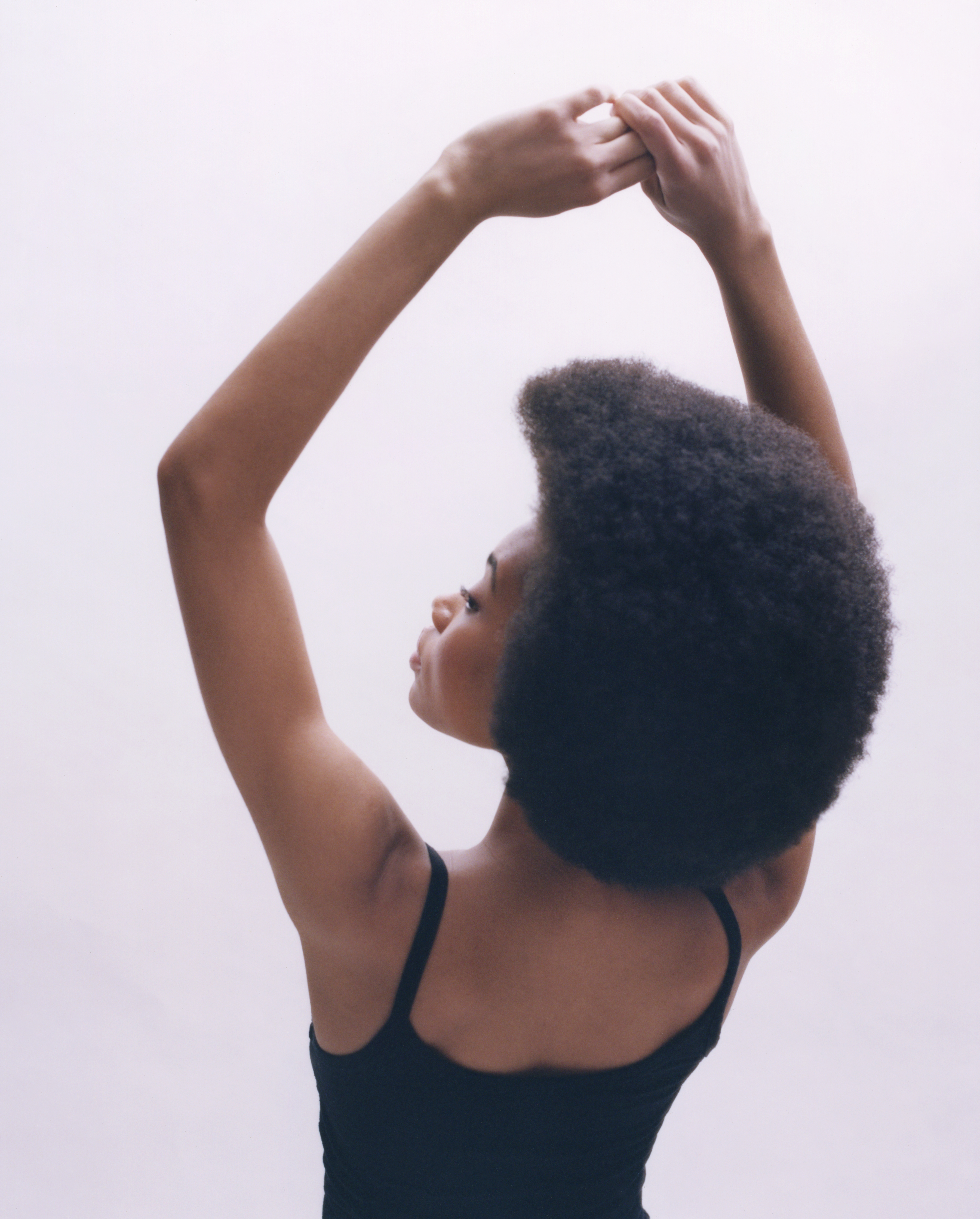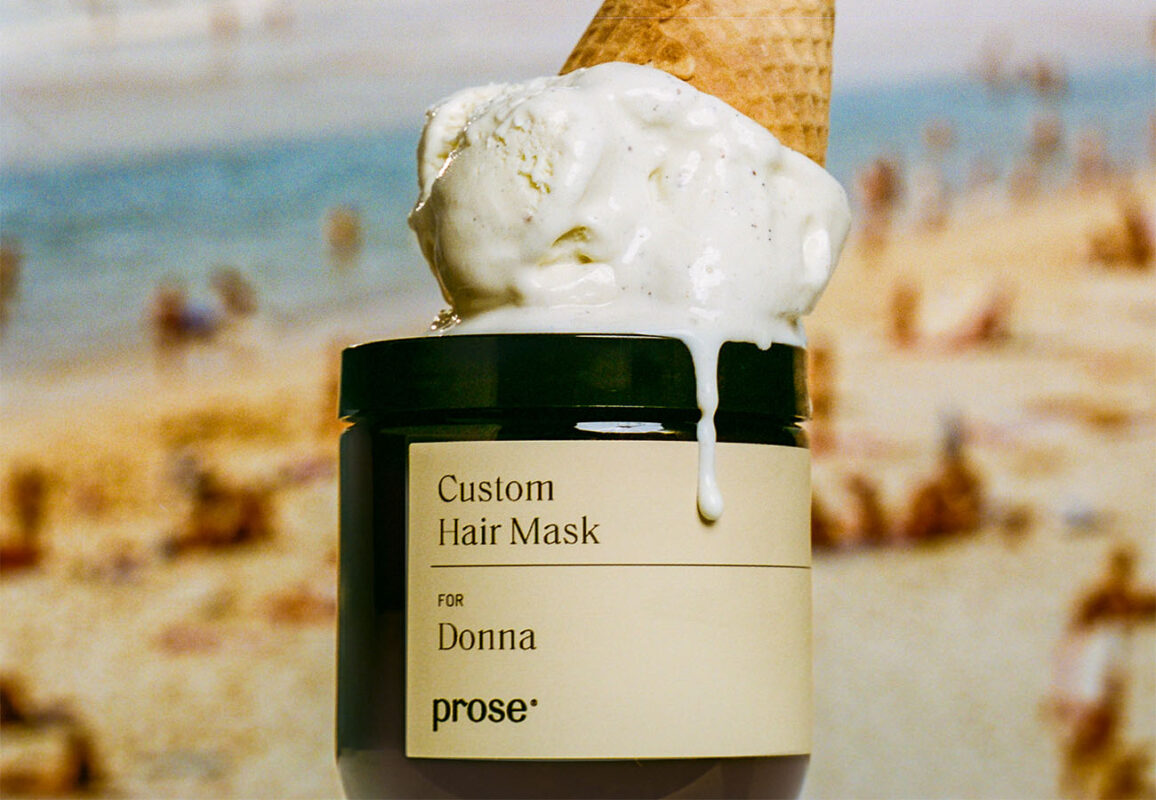“Texture is my thing,” he says. “[I love] the fact that I can blow it out straight or she can wet it and make it curly again. It holds a curl well and it holds styles for a very long time. It’s the versatility that I like.”
After graduating with a degree in design from Michigan State University, Morgan initially had his sights set on becoming a fashion buyer. He worked at Barney’s for a little while until he realized retail wasn’t what he was meant to do. After a friend encouraged him to pursue a career in hairstyling, he completed beauty school and an apprenticeship that led him to relocate to NYC in 2011. He landed his frst job working as an assistant for hairstylist Amoy Pitters at Amoy Couture Hair and that’s when things really started to take of for him. He quickly started working with models like Naomi Campbell, Joan Smalls, Jessica White, and Sessilee Lopez.
Morgan’s understanding of Black hair combined with his ferce wig game is how supermodel Naomi Campbell became one of his most loyal and long term clients. He not only knew how to work with textured hair but he also understood early on that hair — for Black women especially — was very much about culture, identity, and self-expression. His work has been featured in a number of publications including British Vogue, ELLE, Essence, and Harper’s Bazaar, as well as in advertising campaigns for brands such as Calvin Klein Underwear, Bumble and Bumble BbCurl, and Alexis Bittar.
“I didn’t learn how to officially do wigs the way I do now until I started working with Naomi Campbell.” he says. “She liked how I did things. I used to look at her wigs, turn them inside out and study them. She thought I was this great wig person but that gag is I was studying the way she looked. I was studying the way she did hair. In a lot of my posing, I’m emulating her posing so in case I had to do her hair, I knew how it would look on her.”
Morgan speaks to Prose about the beauty of Black hair, how it’s inspired his career, and the change he still wants to see when it comes to hair acceptance. Words byJohanna FerreiraPhotography
When did you realize you had a passion for doing hair?
I’ve always kind of loved hair. I remember one of my frst projects when I was in design school… I created this look and Gwen Stefani was my muse. But I remember everyone was making fun of me because I focused on the hair way more than my looks. Like I had unfnished hems and stuf but I made wigs for the girls and my wigs were impeccable.
How has your ability to work with different textures— natural hair textures in particular—got you to where you are today in your career?
From behind the scenes, from the back of the head you don’t see the race—you see texture. Especially where we’re going now there are so many diferent ethnicities mixing and creating diferent textures so if you know how to work with diferent textures you know how to work with hair. Coming from a world where I had to deal with the 4Cs and the 3Bs, with Black hair having so many diferent ranges and textures in my community, I began to familiarize myself with things like ‘oh this is too heavy for fne hair.’ And I began to teach. ‘Yes, I realize that you think she’s very dark and Black but her hair isn’t what you think it is’ and I started to talk to people in texture. And when you convey texture to people they begin to get it. Stop looking at what they look like. Look at only their hair. So being able to work with such a wide range of textures made me feel confdent going into shows and of course, I heard horror stories.
You heard hair horror stories?
You have to think about it. A lot of these girls are discovered at a young age and placed in diferent countries with diferent people. One of my girls had a weave, this is back when people were really wearing weaves. They tried to round brush her with the weave on her head and they snatched the braid of of her head. Her whole braid came of. [With] a lot of these girls I met, I had to have a magic wand because they would be like can you make magic happen now because [their hair has] been damaged for so long. I would try to tell her as many secrets as I could backstage because I may never see a girl again. At the time people were always thinking about money transactions but those girls remember those tidbits that you gave them like ‘take a heat protectant with you just in case they don’t have one’ and preparing them because they were traveling around the world and they were like my little babies. Their hair was my concern as a stylist.
How is it that in 2020, there are still well-known stylists who don’t know how to work with certain hair types?
A lot of us learned how to pass the state exams [for beauty school] but with Black hair a lot of us really learn by having clients. It’s sad that we have to learn by trial and error but that’s how we learn. A lot of the problem is that people need to make more time. People want to rush through everything. I remember coming from beauty school and [some of my frst jobs consisted of] styling kids’. Most of the time it took me 30 to 45 minutes just to blow dry but people want to rush through in 15 to 20 minutes and they aren’t giving the hair the proper care it needs.
What advice would you give to someone trying to make it as a celebrity stylist and who wants to work with all textures, but wasn’t educated or trained to work with Black hair?
I would just tell them to practice and if you know you want to work with Black girls, test with those Black girls… There’s so many levels and they’ll think like ‘oh this is easy’ and it’s like, ‘No. Her hair might be easier to blow out but to keep it straight, to have it go under the diferent temperatures or survive diferent weather, it really takes practice’. Learn the basics and essentials, take your time, lower the heat, use heat protectants and a lot of the time just ask the client. Certain girls know. I have to do a quick consultation beforehand asking if ‘you are allergic to anything, do you have any reactions to anything, and which is your best side’? It’s about her feeling comfortable and her giving you the information that you need. Her telling you ‘I don’t put that on my hair because it does this’ can make things easier instead of being like yes, we are professionals. She knows her hair better than I would.

What do you love about wigs?
I love the versatility and the quick changes. In the morning you can have a short bob [and] by the night you can have hair pouring down your back. It’s like fashion. That’s what I like about wigs. You can change your look so quickly without having to sew in or clip in. They’re like hats!
Wigs are something that Black women have been rocking and perfecting for years. Recently we’ve seen it become more mainstream. Can you talk about Black women and their contributions to beauty?
Black women are always overlooked and things are taken from them but nothing is given to them. They shamed Black women for wearing wigs. ‘Oh you’re wearing a wig because you don’t have any hair.’ That’s not the case for everyone. My biggest mind-blowing wig moment is [in] Waiting to Exhale. Whitney Houston was wearing a French roll wig. Black women contribute so much. They’ve been the test for so many diferent hair treatments and hairstyles and they haven’t gotten the credit. They lost their hair and had their hair pulled out at the testing stages for so many. They walked so a lot of these young girls could run.
We do see that both the fashion and beauty industries are evolving when it comes to inclusion. How does it make you feel that we’re seeing more Black women and Black hair in beauty ads, in editorials, and on the covers of magazines like Vogue?

What kind of changes do you want to see specifically within the fashion and beauty industries?
Well, now you’re seeing these high-end product categories that people try to ofer like Balmain. Now they have Balmain Paris Hair Couture. We still want access to the nice things so it’s about them being able to market to us and not be like a side thing. I’d like them to actually speak directly to us. It’s okay to speak to us. You’ve been speaking directly to other people for so long. It’s okay to have marketing categories that actually speak to us.
In your opinion, where do we still need to make progress?
I’m always promoting the Crown Act and natural hairstyles at the workplace being accepted but it’s still not in all of the states. I have this thing, when you have other cultures come to a work office setting with wet hair and they are able to sit and let it dry. To me when you think of a corporate world, she should be sitting at home because she’s not ready for work. But when someone comes with an afro but they are sitting home because their hair is not deemed acceptable, that’s when I have the problem. When [a Black woman] can come up with no one looking at her hair and asking to touch it like she’s a pet… and we can move on. That’s when I’ll be satisfied.
Where do you see yourself in 5-10 years with the business? What’s a big dream you have?
I’ve always wanted to lead shows. You know when editors are behind the scenes and they’re asking for hair tips and hair advice. I want to do that. I want to be a professional that people come to for advice because I want people to have the best hair that they can have in their life. I’m very holistic, so if I can be the hair show lead or the campaign lead — somewhere where I’m able to give advice on how to take care of textured hair.





